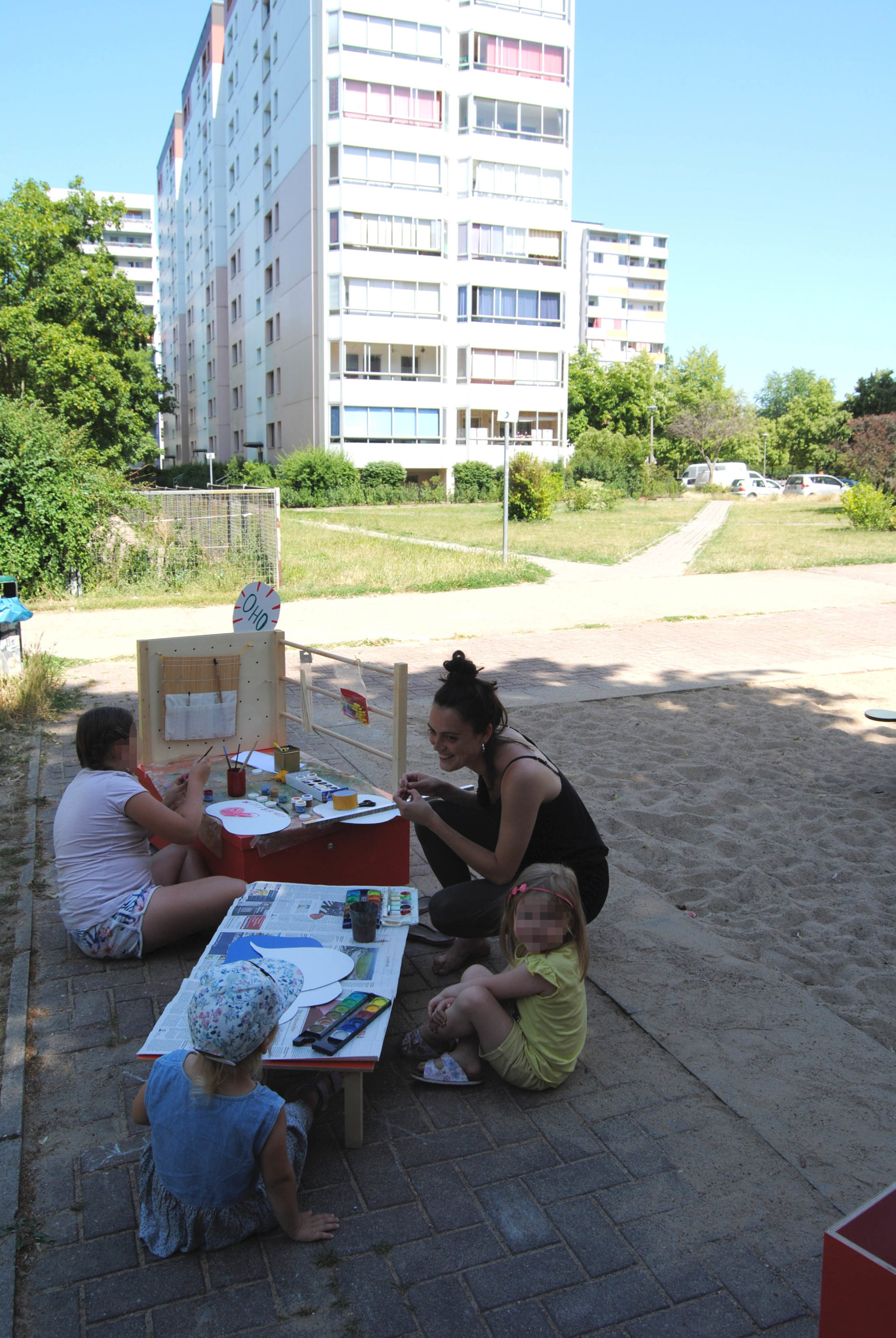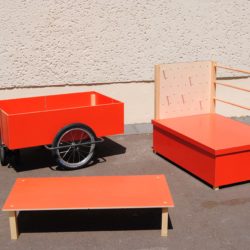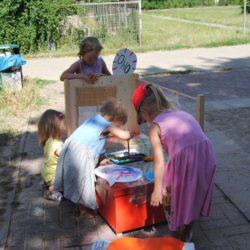KiezVehikel
Description
A mobile unit which as an initiator enables encounters and is the basis for actions in public space. The vehicle enlivens places in the neighbourhood, brings neighbours inside together and enables participation in cultural activities. It can be used as a consultation, information, play and work station and much more. Its modular design allows for flexible use and adaptation to the respective situation. The wagon can act as an extension of existing local facilities, making existing offers in the neighbourhood visible and inviting. Its presence in public space is intended to reduce inhibitions that may arise when entering existing, space-bound facilities and to create new networks in the neighbourhood.What is the Topic?
The project deals on the one hand theoretically with the complex concept of neighbourhood, its conditions and effects, and on the other hand with the inhabitants of the Neuhohenschönhausen Süd district, characterised by its prefabricated concrete slab buildings. The project questions the potential of design to have a positive effect on social processes and tests design strategies for neighbourhood structures.
Why does it look like this?
The car is modularly constructed in order to be able to react flexibly to different conditions in public space and to be applicable for different actions. Its red colour is intended to attract attention and create a recognition factor. The structure makes it easy to handle and therefore uncomplicated and quick to set up. The Kiezvehikel is built in such a way that extensions, such as new superstructures, are conceivable. The concept envisages that the vehicle can be replicated with simple means.
What is special?
The vehicle picks people up where they really are. By being in one place only temporarily, the vehicle is given something non-binding and can offer a temporary change in everyday life as well as overcome inhibitions that may be associated with room-bound facilities. The trolley provides a basis for spontaneously playing in the neighbourhood and temporarily forming communities to give potential a space for development. Its modularity allows it to react to different circumstances and actions. The mobile unit can facilitate access to cultural offerings and thus make a small contribution to improving the participation of people with less income.
What is new?
The mobile unit provides a base from which people can get to know each other and from which different projects are feasible. Through its mobility, it can visit places that are otherwise less in focus and invite people where they really are. By meeting other people, prejudices are to be questioned and in the best case (depending on the project) imagination and creativity are to be encouraged.




